|
|
|
|
MySQL Error!
MANNHEIM |
Kunsthalle Mannheim
Friedrichsplatz 4 | 68165 Mannheim
Fon.: +49 (0)621 / 293-64 52/30
>> HOMEPAGE
Rituals are essential formats of actions creating and sustaining human culture, spirituality and sociality. Rituals are both historically inherited and contemporarily invented collective actions ordered in a commonly known dramaturgy, often ‘directed’ by a leading person. Through rituals humans experience, partake of and interpret communal events, whether celebratory or shocking, and these events confirm as well as generate a sense of collective experience – in some cases also consciousness.
The theme Role and Ritual is unfolded through artistic and anthropocentric ‘case studies’ of local ritual culture and role-playing cited in a postcolonial, global context.
This exhibition presents documentations of rituals focusing on their appearance and the social roles and codes manifested therein. Here, also the role of the artist as researcher – as the ‘lonely hunter’ for specific situations and images – is reflected as regards the cultures and peoples observed.
|
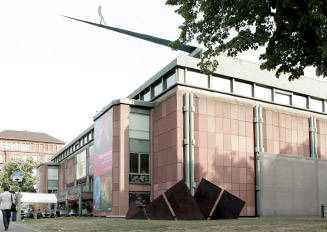
Kunsthalle Mannheim
|
|
ZEPHYR of the Reiss-Engelhorn-Museen
C 4.9 | 68159 Mannheim
Fon.: +49 (0)621 / 293 21 20
>> HOMEPAGE
How do the decisions that politicians make (or don’t make) affect our lives in real, tangible ways? What are the effects of political practice or malpractice?
The Affect and Effect of Politics explores the real, tangible effects of politics on human beings and how these are imprinted on the physical environment: on landscapes, buildings, and social spaces; but also how they impact humans psychologically. The exhibition focuses on the legacy of colonialisms and empire, current political upheavals and their repercussions, the politico-economic entanglements of the West beyond its own borders, and the new realities of the emerging economic super-powers in developing countries. While most of the information we get about politics is transmitted through the media, this information comes to us from a dispassionate distance. This category of the festival thus aims to re-emphasize the capacity of photography to generate affect and empathy in relation to issues that often seem at a "safe distance from home", as well highlighting photography’s capacity to inform and generate vital knowledge that often escapes the public mainstream media discourse.
|
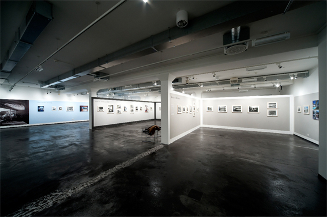
ZEPHYR of the Reiss-Engelhorn-Museen
|
|
Alter Meßplatz
68169 Mannheim
PUBLIC OUTDOOR PROJECT BY BEAT STREULI (SWITZERLAND, 1957)
The photographic installation on the Alter Messplatz is a site-specific artwork that the Swiss artist Beat Streuli developed especially for the city of Mannheim in cooperation with the 4th edition of the Fotofestival Mannheim_Ludwigshafen_Heidelberg. For the project 'Alter Messplatz Mannheim 07-11', 2011, Streuli worked on-location in Mannheim, taking photographs in the city and in particular at Alter Messplatz itself) during the month of July.
Beat Streuli has become internationally known for his urban portraits and distinctive style of street photography - photographs of anonymous passers-by captured unawares - taken over the years in the world’s big cities: from Sydney, Tokyo and Athens to London and New York. In his work, ethnic or cultural backgrounds take a back seat in favor of a phenomenological treatment of their incidental activities and bodily gestures. The repetition of human forms and human ‘traffic’ develops into a meditative inquiry into a human condition.
The presentation of a large-scale commission comprised of large-format billboards expands the Fotoestival’s museum exhibition context and returns the photographs back to the site of their origin. The viewers are confronted with the presentation format and the representation mechanisms that are similar to advertising, but also quite different, too. Streuli’ work complements the exhibition’s concept and its humanistic, anthropocentric focus by enquiring into the localisation of human beings in a consumer society.
Curators: Katerina Gregos and Solvej Helweg Ovesen
|
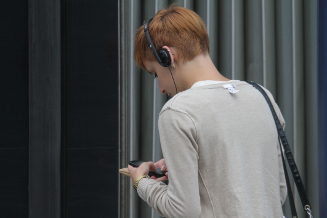
Beat Streuli working material 'Alter Messplatz Mannheim 07-11', 2011 Courtesy the artist and gallery Eva Presenhuber, Zurich
|
|
LUDWIGSHAFEN |
Wilhelm-Hack-Museum
Berliner Strasse 23 | 67059 Ludwigshafen
Fon.: +49 (0)621 / 504 30 45
>> HOMEPAGE
Ecological Circuits explores the changing relationship of man to the natural environment, a relationship that has been constantly shifting and has become increasingly critical during our times. Interventions by human beings into nature and natural resources, such as exploitation, redistribution and consumption of raw materials, have dramatically impacted ecological circuits throughout the world. Melting ice caps redefining the Arctic landscape; oil, coal and gas being extracted and consumed at breakneck speed; explosive urbanisation all over the planet and cities expanding like fast-growing forests: all these are symptoms of a worrying ecological pathology. The photographs presented in Ecological Circuits generate a visual consciousness of the effects of unchecked human intervention on nature and natural resources, the vicious cycle of production and consumption, but also indicate a drive to a new ecological consciousness and responsibility we all face at the dawn of the twenty-first century.
|
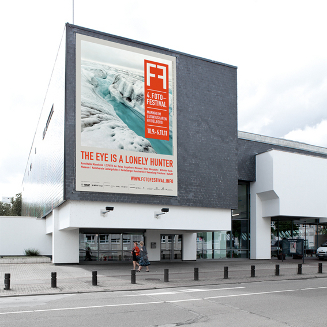
Wilhelm Hack Museum
|
|
Kunstverein Ludwigshafen
Bismarckstrasse 44-48 | 67549 Ludwigshafen
Fon.: +49 (0)621 / 528055
>> HOMEPAGE
This sub-theme consists of a photographic investigation into the organisation, performance and ‘personalising’ of everyday life, a task all human beings face. It is inspired by the homonymous book, by the sociologist Michel de Certeau, The Practise of Everyday Life, where he investigates how human beings individualise culture, and alter or modify things in order to make them ‘their own’. How do we go through the processes of daily actions, necessities, and routines? How do we devise strategies that get us through the quotidian?
The exhibition focuses on an important aspect of the practice of everyday life, namely the possibilities and inabilities of individual agency both as a kind of communication of a microcosmic worldview and as an example of the will to survive.
|
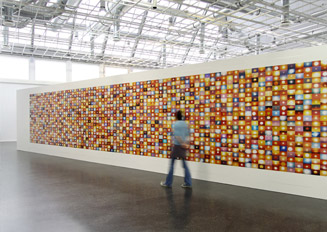
Kunstverein Ludwigshafen
|
|
HEIDELBERG |
Heidelberger Kunstverein
Hauptstrasse 97 | 69177 Heidelberg
Fon.: +49 (0)6221 / 184086
>> HOMEPAGE
A life cycle represents an existential curve including being born and passing away, the trajectory of an individual existence. The photographs in Life Cycles capture and cut through the existential moments of biographical importance that impact upon and eventually constitute our subjective experience of the world and the deeper bliss or painful hardship of life. This exhibition venue therefore showcases the classical symbolic manifestations of the movement of life from one state to another – the so-called ‘rites of passage’ – such as wedding ceremonies or burial practices but it also provides insight into the different conditions that human beings are subjected to in their various life stages, and explores how these appear as photographic testimonies: from the amateur family album, and the still life photograph to the carefully staged allusive portrait.
|
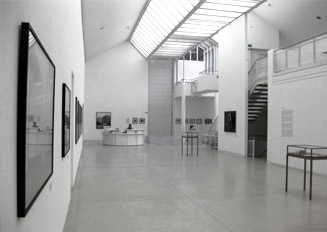
Heidelberger Kunstverein
|
|
Sammlung Prinzhorn
Voßstrasse 2 | 69115 Heidelberg
Fon: +49 (0)6221 / 56 4492
>> HOMEPAGE
Roger Ballen’s point of departure is sociological and anthropological, with a
focus on the disenfranchised, the marginalised and the peripheral. His
subjects are staged in gloomy and shabby domestic settings, resulting in
powerful, disturbing and alienating pictures, which transcend voyeurism and
venture into the territory of the affective. His series Outland (1987–2000)
captures the life of the isolated and poor rural white population, who lost any
privileges they had with the end of the apartheid and left many in a
psychological state of shock. The images in Shadow Chamber, from the first
decade of this century, are even more haunting. They picture estranged,
psychologically shaken people in grubby rooms, sometimes accompanied by
pets. These photographs capture with great empathy the daily life of people
living almost entirely outside of society: a telling and intense psychological
document of bare life.
|
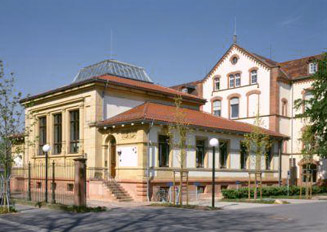
Sammlung Prinzhorn
|
|
halle02/Kunsthalle
Güteramtsstraße 2 | 69115 Heidelberg
Tel: +49 (0)6221 / 33 8 999-0
>> HOMEPAGE
German photographer and artist Tobias Zielony has been invited to make a solo presentation at the
newly renovated Kunshalle Heidelberg, halle02. For over a decade Zielony has observed and
documented the nocturnal life of suburban Germany, Poland, Canada, USA, France and Italy. His
images depict youths hanging out and posing in petrol stations, car parks and deserted social
housing estates. The series Quartiers Nord (2003) and Vele (2009-10) both deal with the alienating
architectures and social relations. Quartiers Nord consists of a series of nine photographs taken in
the northern part of Marseille, where the population is largely Algerian or North West African. Vele is a series of 17 images in various sizes from a social housing complex in the north of Naples. Le Vele is the name of the complex and optimistically means ‘The Sails’, but was squatted by Mafia
families before the building was finished and nowadays has become the drug-dealing centre of the
city. Zielony has recorded the bombastic yet fantastical architecture of concrete and metal at night,
with its vast passageways and blocked perspectives becoming a visual metaphor for the estate’s
social life. Zielony aims to capture the heart of an urban site and what it means to a youngster.
Local youth cultures all around the world share the fact that they are inspired by global culture –
film, fashion, drugs and music – which are adapted as 'styles' of representation of identity, and it is
these aspects that are apparent when the youth are photographed
|
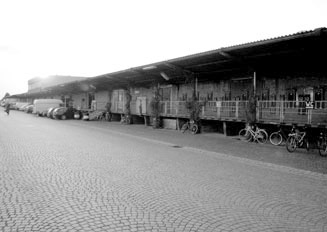
halle02/Kunsthalle
|
|
|
|
|
